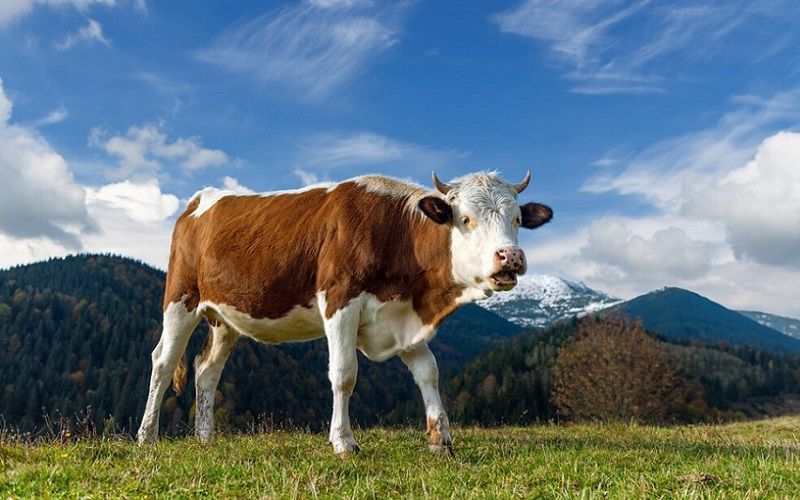Scientists have found a way to reduce stress in dairy cows
Sourse: vetandlife.ru
A group of scientists from the University of British Columbia (Canada) has found that training dairy cows using the positive reinforcement method not only helps to form the right behavior, but also improves the emotional state and general well-being of animals.

According to scientists, earlier studies have shown that training animals using the positive reinforcement method can reduce the stresses they experience during routine livestock procedures such as haircuts or veterinary examinations. To determine whether this statement is true for cattle (cattle), scientists selected 20 Holstein dairy heifers aged three to six months and randomly distributed them between two groups.
The first group received nutritional encouragement when placed in livestock corridors, and standard methods of animal treatment were applied to the second (control) group.
They worked with cows 4 times a week, one lesson a day. A total of 28 classes were conducted during the study. The animals were first brought to the waiting area ("starting box"), and then transferred to the training area, where the corridors for livestock were located. Heifers were taught to touch the target object with their muzzle, then this object was moved until the animal completely entered the corridor. At the same time, the desirable behavior of cows was encouraged with the help of grain. The animals in the control group performed the same procedures, but they were not given any food, but only led into the corridor using gentle nudges and voice commands.
To evaluate the results, the scientists recorded the manifestations of expectation and gaming behavior at the moment when the animals were in the starting box before the start of training. As a result, it was noted that cows who were trained using the positive reinforcement method were more likely to show an expectation of starting training. They also had more frequent gaming behavior (jumping and running), which, according to scientists, indicates that the animals perceived the activities as a positive experience.
After analyzing the data obtained, the researchers concluded that the use of the positive reinforcement method in cattle training can help overcome the stress and fear that dairy cows periodically experience, potentially improving animal welfare and facilitating the work of staff.
The results of the study are published in the Journal of Dairy Science.
The first group received nutritional encouragement when placed in livestock corridors, and standard methods of animal treatment were applied to the second (control) group.
They worked with cows 4 times a week, one lesson a day. A total of 28 classes were conducted during the study. The animals were first brought to the waiting area ("starting box"), and then transferred to the training area, where the corridors for livestock were located. Heifers were taught to touch the target object with their muzzle, then this object was moved until the animal completely entered the corridor. At the same time, the desirable behavior of cows was encouraged with the help of grain. The animals in the control group performed the same procedures, but they were not given any food, but only led into the corridor using gentle nudges and voice commands.
To evaluate the results, the scientists recorded the manifestations of expectation and gaming behavior at the moment when the animals were in the starting box before the start of training. As a result, it was noted that cows who were trained using the positive reinforcement method were more likely to show an expectation of starting training. They also had more frequent gaming behavior (jumping and running), which, according to scientists, indicates that the animals perceived the activities as a positive experience.
After analyzing the data obtained, the researchers concluded that the use of the positive reinforcement method in cattle training can help overcome the stress and fear that dairy cows periodically experience, potentially improving animal welfare and facilitating the work of staff.
The results of the study are published in the Journal of Dairy Science.
Key News of the Week











